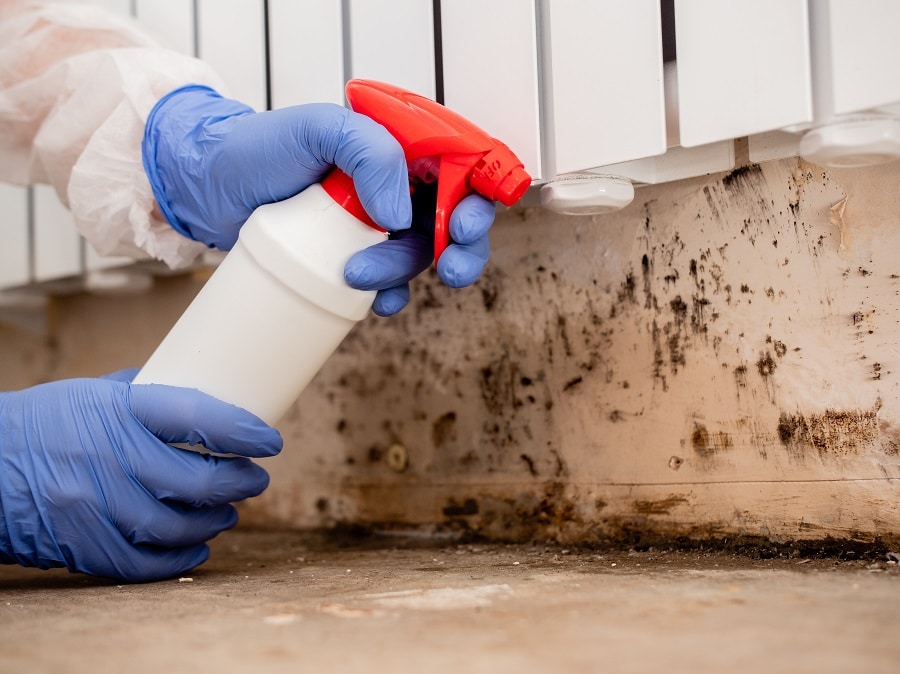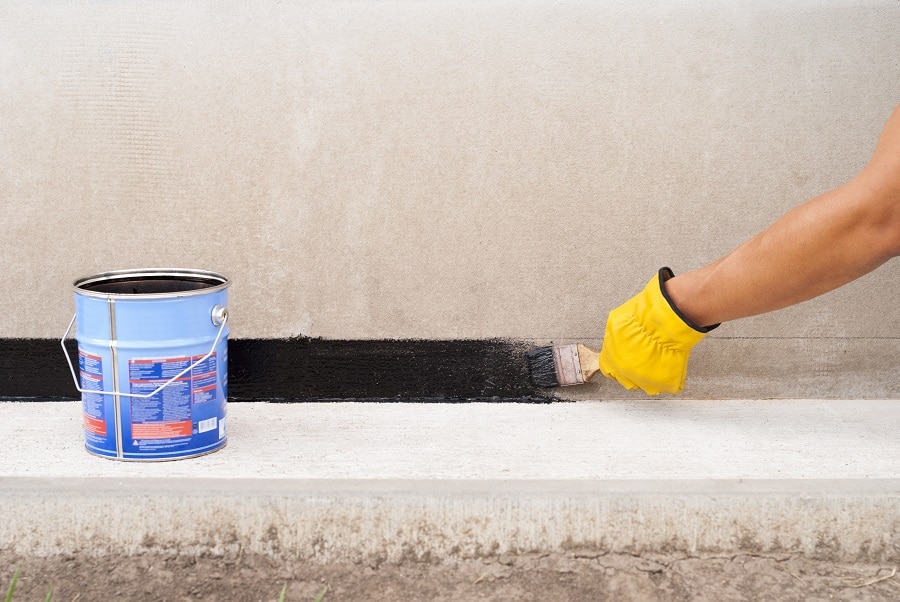Call Our London Damp Experts team now for a free quote, consultation and advice:
Call on 0208 0162508.

At London Damp Treatments, our damp proofing team will only identify legitimate damp issues and suggest cost-effective solutions. Our moisture proofing experts can inspect your home, undertake a damp and timber survey, and suggest the best course of action for repairs. It should be noted that all our surveyors are approved by the Property Care Association (PCA). Examining your home is the initial step in addressing any damp problems.
When assessing a building, whatever its age, rot is often the culprit of any decaying timber. Wood rot can manifest in two ways: dry rot or wet rot, both of which are caused by fungal degradation of wooden beams.
At London Damp Treatments, we provide a comprehensive selection of damp proofing and treatments, and we are sure we can provide cost-efficient repairs accompanied by our XX-year assurance.
You can trust our damp proofing specialists to carefully evaluate issues in thorough surveys and offer you the most proficient services, giving you assurance for the future. This includes but is not limited to rising damp treatment, basement waterproofing, wet rot control, timber treatments, and other damp proofing skills.

Wet rot is one of the most widespread wood degradation forms. It is a wood-rotting fungus that thrives in moist wood. The wet rot term covers a broad selection of fungal species, including Coniophora puteana and Choanephora cucurbitarum. These fungi obtain their nourishment by breaking down the cell walls of wood, which weakens the timber’s strength and can cause serious harm to a building’s structural stability.
Differentiating between dry and wet rot is not a straightforward task, yet certain clues can help identify the type. Wet rot necessitates a higher dampness level, around 50%, to prosper, whereas dry rot germinates at a lower moisture rate, in the region of 20-30%.
Dry rot can cause more destruction than wet rot due to two reasons. Firstly, it requires a lower amount of humidity to survive. Additionally, it can develop in hidden areas.
Wet rot is typically the result of a suspected structural issue, though it may also be caused by a chronic form of Rising Damp.
Wet rot is the most common source of damage for wooden structures. It is a naturally decaying wood, brought about by high moisture levels. Any type of wood in a home can be affected by wet rot, so it is best not to be mistaken for dry rot, a much more serious form of wood decay.
Localised fungal growth on wood can be a problem. It can cause discolouration, cracking, warping and deterioration of timber, which can lead to safety issues. To prevent this, it is recommended to inspect wooden surfaces regularly and take appropriate action when necessary.
Ensuring a neat and professional finish, this process involves removing dirt, grime and discoloration, which can be achieved by applying a dilute bleach solution to the wood. Leave the solution to act for 10 minutes, before lightly scrubbing with a brush. Then, rinse the wood thoroughly with clean water and allow to dry naturally.

In the absence of visible fungi, one can distinguish Wet Rot from Dry Rot by examining the colour of the wood as well as the type and size of cracks as the rot progresses. Wet Rot has a musty, damp odour, resembling that of earthy, rotting soil. In fact, it can be more pungent than Dry Rot. If you detect one of the above signs in your home, contact a professional without delay to begin treatment.
If you fail to address wet rot, the wood will become compromised, in some cases causing a safety risk to those occupying the home. The least impact wet rot could have on your property could be a softened chipboard floor, which, though uncomfortable, could be tolerated.
When critical structural timbers are exposed to moisture over an extended period, such as when the timber is next to a damp wall or at ground level, this can have an adverse effect and may lead to loss of structural integrity. The timber could become damp due to water seepage.
When rot begins to set in, the wood becomes spongy and soft. If prodded with a sharp object, such as a knife or screwdriver, it will cave in. Cracks that run the length of the grain usually signify that the wood is wet. For more information on treating wet rot, contact London Damp Treatments on 0208 0162508. Allow us to assist you.

Once a survey has been conducted and a solution agreed upon, we’ll arrange a suitable appointment for our surveyor to attend your home. Our skilled technicians will then carry out the repair of any wet rot, in a few simple steps:
In order to stop the source of moisture, it is important to determine the source of the moisture and then take the necessary steps to fix it. To do this, it is important to inspect the area to identify any possible sources of moisture, such as a plumbing leak, a roof leak or a faulty appliance. Once the source has been identified, it is important to take steps to repair or replace it, as well as taking any other steps necessary to prevent moisture from re-entering the area.
To stop the source of moisture, inspect the area to identify any potential sources, then take steps to repair or replace them. Additionally, take necessary measures to prevent moisture from returning.
Our experts will eliminate any infected wood and wall plaster to discover and resolve the source of moisture. Prior to wet rot treatment being conducted, the source of dampness must be solved and dried; this will impede wet rot spores from sprouting in the future.
Eliminate the impaired zone
Remove the area that has been damaged. Take out the section that has been ruined.
To stop the spread of your rot fungus issue, skirting boards, panelling, ceilings and plastered walls which have decayed or started to deteriorate should be taken away.
If you find wet rot, it’s important to treat it as soon as possible. Firstly, you must remove any wet and decayed wood. Use a sharp chisel and hammer, and wear protective gloves to protect your hands from splinters. Then, scrub the area down with a wire brush and clean using a fungicide solution. Finally, apply a fungicidal preservative to the affected area to prevent further damage and rot.
If you come across wet rot, it is essential to take action without delay. Start by eliminating all wet, decayed wood with a chisel and hammer. Don gloves to protect your hands from splinters. Subsequently, scrub the area with a wire brush, and then clean it using a fungicidal solution. Lastly, coat the affected area with a fungicidal preservative to prevent additional damage and rot.
A fungicidal paste is applied as a protective barrier if structural timbers and brickwork have been affected by wet rot. This paste not only stops wet rot from reappearing, but it also guards against woodworm attacks for a long time.
Replace all damaged timber with new pieces.
Replace the damaged timber with new parts. Ensure the new timber is of equal quality and colour to the existing. Measure the length, width, and depth of the affected parts and get replacements of the same dimension.
Once our property technicians are satisfied that the wet rot treatment has entirely eradicated rot from your home, they will commence replacing removed timber with preservative-treated timbers.
To treat wet rot effectively, one must identify the source of moisture and dampness. We not only repair the damage caused by the rot, but also take steps to ensure the problem does not re-emerge. Finding the point at which the water enters the wood is key to preventing future occurrences.
In some instances, you may need to replace affected timbers. However, in most cases, applying a fungicide to the wood can prevent damp rot. Treating wet rot involves using a fungicide during the drying process.
When you detect fungal growth or hyphae strands, you should apply a powerful fungicide to the area selectively in order to trace and eradicate it. Any contaminated timber or rubbish in crevices beneath the floor must be disposed of and incinerated.
You must also get rid of any tainted plaster that has been contaminated, such as strands. To treat any damaged timbers, you must use a fungicidal solution.

For optimal results, enlist the help of experts like us at London Damp Treatments. We are proficient in dealing with wet rot, and will be able to identify the source of dampness and accurately pinpoint affected areas. Don’t hesitate to call us on **0208 0162508** if unsure how to tackle wet rot problems.
Call Our London Damp Experts team now for a free quote, consultation and advice:
Call on 0208 0162508.
Wood in moist areas such as bathrooms and kitchens should be cared for to prevent deterioration. Areas most prone to dampness include sills, window boxes, fence posts, timbers that come into contact with brickwork without damp proofing, timbers in contact with silage and manure on farms, and timber used in river or marine piling, or bridge construction.
Wood hardeners can be used on wet-rotted wood to increase its strength. They are particularly well-suited for treating window frames and doors.
For your safety, all of our work is guaranteed. In addition, we are members of the Guarantee Protection Scheme, an independent insurance policy that covers the duration of your guarantee if you want to take it out.


Max and his team have been at our property all week and I really can’t thank them enough for the fantastic job they’ve done on plastering both our walls and ceilings. They have literally transformed the appearance of our house! Not only has Ma…
From start to finish Max has been incredable. His knowledge lin damp proofing is second to none and his team where very clean and polite. The plastered finish was like glass so happy we choose Max Plastering for job.
Lovely bunch of lads left a very neat and clean job. Problem was solved.
Perfect Finnish and all left clean and tidy and no mess. Used Max previously and would not hesitate to ask him carry out more work.
Max, Harvey and Stuart arrived promptly as arranged. Done a great job on our outside rear wall. Work completed to a high standard, removal of all old material and cleaned up after themselves. I am so pleased with the standard of their work they ar…
They turned up on time and carried out the works in a very professional manor leaving the front of the house clean and tidy. Very impressed would definitely recommend.
I have to say that on every level Max (with Stuart and Harvey) did an extremely professional job! They explained what they were going to do, they were polite and courteous and respected that they were coming into our home. The plastering is of the…
I called max and he managed to come around the same day to do a survey. The next day I received an extremely detailed survey compared to any other damp proofer which made me feel very at ease that he was going to do the right job. Max and team tur…